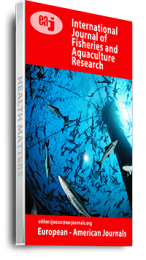The proximate and mineral composition of the flesh of six commercially important fish species (Lates niloticus , Bagrus bayad , Oreochromis niloticus, Synodontis schall, Labeo niloticus and Hydrocynus froskalii) from Jebl Awlia reservoir, which represent different grades of preference to the Sudanese consumers, were studied to assess their nutritional values in order to gain the knowledge of the risk and benefits associated with the indiscriminate consumption of these fish species. Protein content was in the range (71.46% -89.13 %) in the fish samples, crude fat was (6.34 % – 9.66 %) while moisture and ash were (75.33% -79.33 %) and (3.83 % -7.07 %) respectively. Minerals included potassium (200.0-774.0ppm), calcium (195.0-246.0ppm), sodium (184.0-211.0ppm), magnesium (144.0-105.0ppm) and phosphorus (90.0-240.0ppm) while iron and zinc were present in trace amounts. Levels of mineral elements in fish species were within WHO recommended limit. The data showed that the fishes are of high nutritional value and good source of proteins and minerals.
Keywords: Mineral, Nile fishes and Sudan, Proximate Composition

